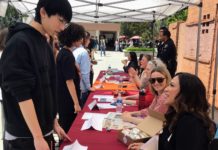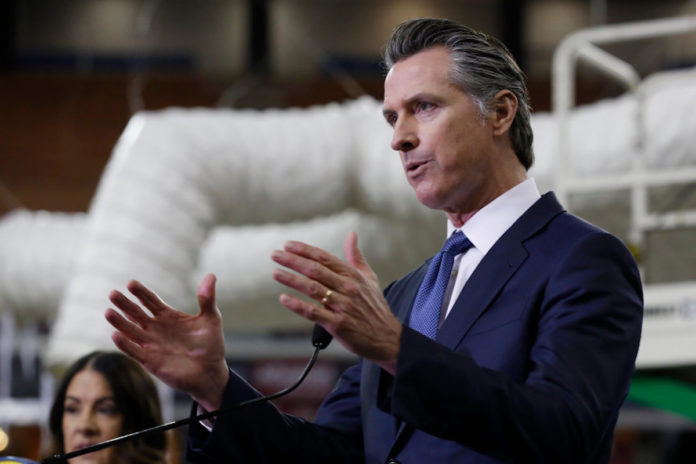Governor Newsom on Monday said the state can begin moving on Friday May 8 toward Stage 2 of his four-stage plan to reopen the state through modification of the stay-at-home order. The Governor’s office will release guidelines for the reopening Thursday.
The initial phase of Stage 2 calls for the gradual reopening—if they can meet state guidelines for certain adaptations–of “lower-risk” workplaces such as bookstores, clothing stores, florists, sporting goods stores and other and public spaces. It does not include offices, seated dining at restaurants, shopping malls, schools or childcare facilities, which are slated for a still undeclared later phase under Stage 2.
The Governor also provided a framework to allow counties “to move more quickly through Stage 2 if they attest that they meet the state’s readiness criteria.”
“Millions of Californians answered the call to stay home and thanks to them, we are in a position to begin moving,” the Governor said in a press release. But he warned this was only the second of the state’s four-stage “roadmap” to the new normal.
The announcement comes with the release of a Report Card showing progress the state has made in the battle against COVID-19 as measured by hospitalizations, ICU numbers, the acquisition of personal protective equipment, testing capacity and other standards.
The state is working with school districts and the California education community to determine how best and safely to reopen. That continues to be the case–the May 8 announcement does not move up this timeline.
While the state will be moving from Stage 1 to Stage 2, counties can choose to continue more restrictive measures in place based on their local conditions, and the state expects some counties to keep their more robust stay at home orders in place beyond May 8. If they elect to move more quickly, counties must create and submit a readiness plan which the state will make publicly available.
State Report Card
California is on track on the following statewide metrics:
- Stability of Hospitalizations
- Personal Protective Equipment Inventory
- Health Care Surge Capacity
- Testing Capacity
- Contact Tracing Capability
- Public Health Guidance in Place
What’s in Early Stage 2
Later this week the state will release public health guidance for certain Stage 2 sectors including some retail, manufacturing, and logistics businesses, which will outline modifications that lower the risk of transmission. Businesses and employers in those sectors will be able to reopen as soon as Friday – if they can meet the guidelines provided by the state. Not all Stage 2 businesses will be able to open Friday with modifications. Some examples of businesses that can open with modifications include bookstores, clothing stores, florists and sporting goods stores.
Other Stage 2 sectors, such as offices and dine-in restaurants, will be part of a later Stage 2 opening. The announcement for Friday does not include offices, seated dining at restaurants, shopping malls or schools. As the Governor noted last week, the state is working with school districts and the California education community to determine how best and safely to reopen. That continues to be the case – this May 8 announcement does not move up this timeline.
While the state will be moving from Stage 1 to Stage 2, counties can choose to continue more restrictive measures in place based on their local conditions, and the state expects some counties to keep their more robust stay at home orders in place beyond May 8.
Regional Variation
The Governor also announced today that while the state is moving into Stage 2 together, counties can move more quickly through Stage 2, if they attest that they meet the state’s readiness criteria. Counties must create and submit a readiness plan, which the state will make publicly available. The Governor signed an executive order today directing the State Public Health Officer to establish criteria to determine whether and how, in light of local conditions, local health officers may implement public health measures less restrictive than the statewide public health directives. Counties must meet criteria including demonstrating they have a low prevalence of COVID-19, that they meet testing and contact tracing criteria, that their health care system is prepared in case they see a sudden rise in cases, and that they have plans in place to protect vulnerable populations. The state will outline these criteria in the coming days.
Contact Tracing
Contact tracing enables the state to suppress the spread of the virus to avoid outbreaks and allows us to maintain our health care capacity and confidently modify the stay at home order. To work toward these goals, the Governor announced a partnership with the University of California, San Francisco and University of California, Los Angeles to immediately begin training workers for a landmark contact tracing program that will help contain the ongoing COVID-19 pandemic while the state looks to modify the stay at home order. The partnership will include a virtual training academy for contact tracers. The first 20-hour training will begin Wednesday, May 6 with the goal of training 20,000 individuals in two months.















.png)











